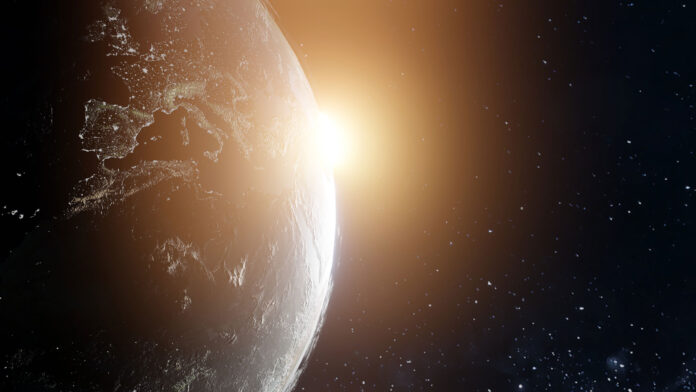The length of a day on Earth is locked in a constant tug of war between the sun and moon. But if not for a billion years of these forces being equally matched, pausing the length of a day at 19.5 hours, astrophysicists at the University of Toronto and University of Bordeaux say that a day on Earth today would have stretched to over 60 hours.
Their study was published in Science Advances.
When the moon first formed 4.5 billion years ago, it was much closer to the Earth than it is now, and it is still slowly drifting away. Back then, the Earth was also spinning faster, and a day lasted less than 10 hours. Today, about 1.7 milliseconds are added to the day every century.
The moon has a major effect on the length of a day because its gravitational pull on our oceans leads to high tides, forming tidal bulges on opposite sides of the planet. The more mass that gathers in these bulges, the harder that the moon tugs on them. These ocean tides cause friction against the sea floor, and the result is that the moon’s gravity acts to slow the Earth’s rotation.
Instead of tugging at Earth’s oceans, sunlight sends heat that pulls on the Earth’s atmosphere, causing atmospheric tides. These atmospheric bulges help the sun put a torque on the planet that speeds up the Earth’s rotation.
These opposing forces work against each other, but usually the moon’s proximity to the Earth gives it an outsized impact — usually 10 times more powerful.
The authors coupled mathematical models with geologic data, such as sediment layers that record cycles of tide heights that give estimates on the length of a day and the length of a lunar month. Their analysis showed that for around a billion years, during the period between around two billion years and 600 million years ago, the Earth’s spin stopped slowing down. Over that span of time, the length of an Earth day was paused at around 19.5 hours.
The study authors explain that during the pause, the atmosphere was warmer. This helped the sun keep atmospheric waves moving around the Earth roughly every 10 hours. That allowed them to travel around the world twice each day. This perfect frequency is called a resonant frequency, where a near exact multiple could fit into one Earth rotation. It meant larger atmospheric bulges to help the sun gain an advantage.
“It’s like pushing a child on a swing,” said co-author Norman Murray, professor of theoretical astrophysics at the University of Toronto, in a press release.
“If your push and the period of the swing are out of sync, it’s not going to go very high. But, if they’re in sync and you’re pushing just as the swing stops at one end of its travel, the push will add to the momentum of the swing and it will go further and higher. That’s what happened with the atmospheric resonance and tide.”
Eventually that resonance broke and the day has been lengthening since then. Today, the sun’s thermal tides take 22.8 hours to travel around the Earth, compared to the 24-hour day.
The authors note their work also validates global atmospheric circulation models used by climatologists to study global temperatures as they evolve with climate change. They used these same models in their study to calculate historical atmospheric temperatures, and they say their work validates them as predictive tools.
The sun and moon are pulling the Earth’s spin in opposite directions, and it’s a battle that can quickly change. As global temperatures continue to rise, we are at risk of pushing atmospheric tides even further away from resonance, which would lengthen the day faster than it would proceed otherwise. That unintended consequence is another way that human activity is changing our planet, and a call to step up our efforts to change that trajectory.









































